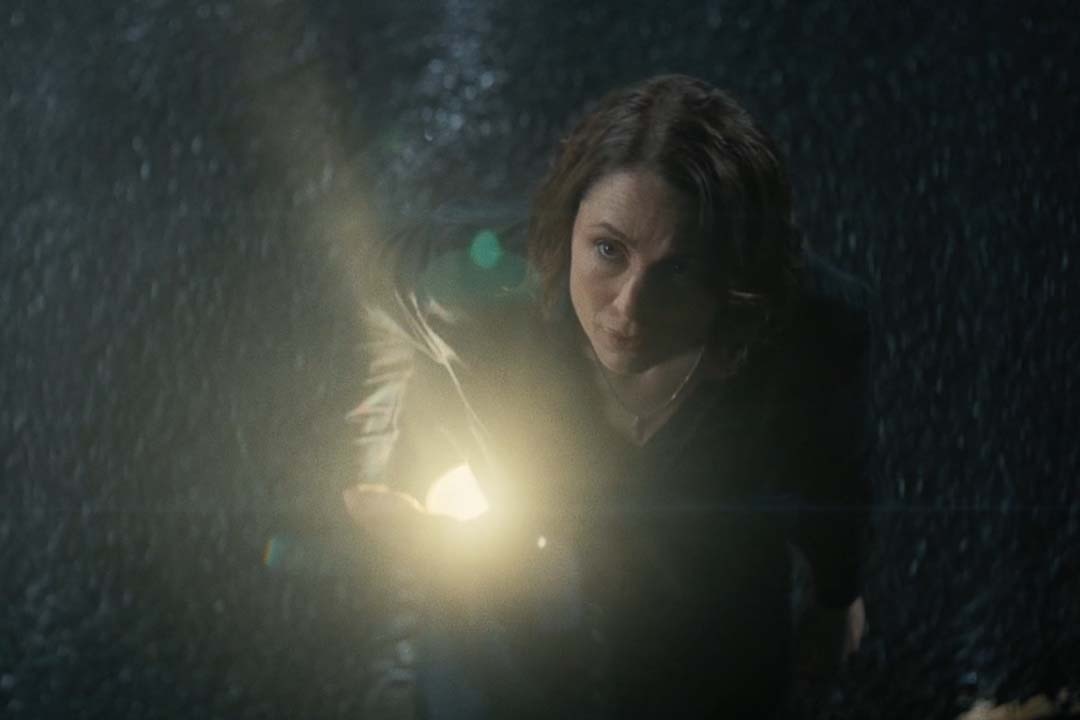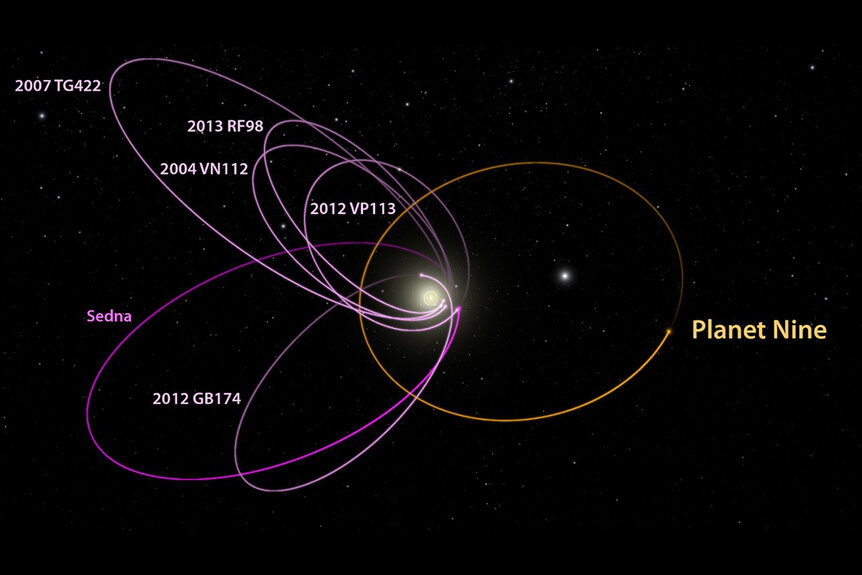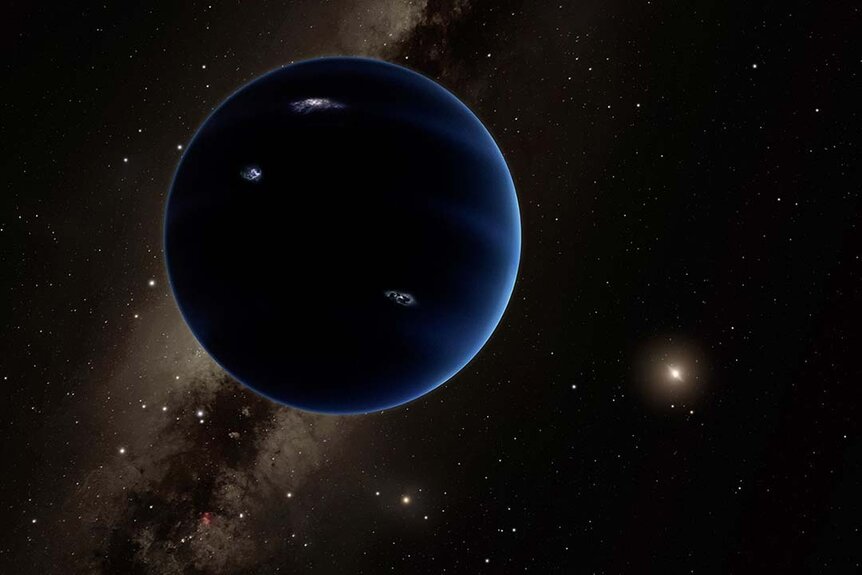Create a free profile to get unlimited access to exclusive videos, sweepstakes, and more!
A new tool in the hunt for the elusive, and possibly fictional, 'Planet Nine'
If you're not careful, your moons might give you away.

The 2019 science fiction thriller Dark Encounter (now streaming on Peacock!) starts in the winter of 1982 when Ray and Olivia return to their home and find that their 8-year-old daughter Maisie is missing. After a year with no sign of her, they presume Maisie dead and hold a funeral, but that’s when some truly strange things start happening. Spoiler warning! It begins with lights in the forest and ends with a visitation from an extraterrestrial entity who reveals the true and grisly nature of Maisie’s disappearance. It’s a horrifying reminder that sometimes the answers to the mysteries which most plague us are right in front of us, if only we have the tools to see them.
It wouldn’t be the first time that an invisible force from beyond the stars influenced our little neck of the cosmic woods, and it won’t be the last. In fact, there might be entire planets out there, shaking up our gravitational neighborhood right beneath our noses. For more than a century, astronomers both amateur and professional have suggested the potential existence of an as-yet-undiscovered planet beyond the orbit of Neptune.
RELATED: Is there a ghost planet hiding in the shadows behind Neptune?
The search for a hidden planet, pushing and pulling on the distant reaches of the solar system dates back to at least the late 19th Century when Percival Lowell founded an observatory in Arizona. There, among other activities, he hunted for the so-called Planet X, in the hope of explaining some of the weirdness of Uranus’ path across the sky. The discovery of Pluto in 1930 had some astronomers hoping temporarily that their hidden planet had been found. Sadly, it turned out not to have the characteristics scientists were looking for and the hunt continued.
So far, Planet X, sometimes called Planet Nine, has yet to be found. The hunt was reignited in 2016, when a study published in The Astronomical Journal suggested the existence of a large world somewhere in the Kuiper Belt, as an explanation for the weird orbits of several trans-Neptunian objects. Our current model of the solar system doesn’t explain why some of the dwarf planets, moons, asteroids, and what-have-you in the Kuiper Belt move the way they do. If you plop a planet roughly 5 to 10 times the mass of the Earth, however, in an orbit approximately 250 times the distance from the Earth to the Sun, that explains things nicely. The only problem is, so far as we can tell, there’s no planet out there.
You might think that an entire planet orbiting our own star would be a hard thing to miss, but space is big and even planets are small in the grand scheme. At that distance, a planet of the proposed size would receive very little sunlight and would therefore be pretty hard to spot. Astronomers would have to get lucky and catch it passing in front of a background star in order to see it. Unless we can look for it in another way.
RELATED: Where *isn't* Planet 9?
A paper recently published on the preprint server ArXiv and submitted to The Astrophysical Journal proposes a new method of finding Planet Nine, if it exists at all. Man Ho Chan, an astronomer at the Department of Science and Environmental Studies at the Education University of Hong Kong, used the size estimates of the hypothetical Planet Nine and the approximate number of small objects nearby, to calculate how many moons the planet might have. According to the paper, Planet Nine might be host to up to 20 moons, each up to 62 miles (100 kilometers) across. If it does have those moons, they might be the key to revealing Planet Nine’s presence in the Kuiper Belt, and the secret is tides.
We most often encounter tides on Earth in the way they move water at the shoreline. Tides are a pretty good reason not to fall asleep at the beach but they also tell us something about the way objects in space interact. While the Moon pulls on the oceans as it orbits around Earth, it also pulls on the Earth itself. That constant pushing and pulling as the Moon orbits, squeezes the Earth and heats its interior. The same thing happens around other worlds, and it’s the reason Jupiter’s moon Io is a volcanic hellscape.
If Planet Nine exists and it has moons, particularly if it has the 20 or so proposed in the paper, then it and its moons would be under intense tidal pressure which could generate a lot of heat. Of course, “a lot” is relative, in the frigid expanses of deep space. Chan suggests that any moons orbiting Planet Nine could be heated to negative 280 Fahrenheit (negative 173 Celsius). That’s pretty cold by our standards, but it’s practically balmy compared to the background temperature of negative 455 Fahrenheit (negative 271 Celsius). More importantly, the tidal heating might be sufficient to generate radio flux which we could pick up with our telescopes, even if the planet itself is too dark to see.
Light up the darkness in your own personal solar system with Dark Encounter, streaming now on Peacock!




























